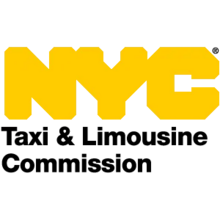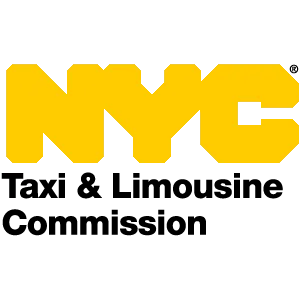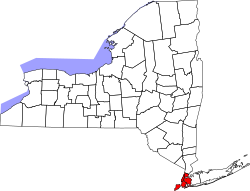

|
No edit summary
|
→Controversies and criticisms: Added information regarding NYPD's use of TLC-licensed vehicles as undercover police cars.
|
||
| Line 277: | Line 277: | ||
In August 2018, the TLC stopped issuing new vehicle licenses for one year, in an attempt to "study the effects of ride-hail services in the city."<ref>{{Cite web|url=https://www.cnbc.com/2018/08/08/new-york-city-votes-to-cap-uber-and-lyft-vehicles.html|title = New York City just voted to cap Uber and Lyft vehicles, and that could make rides more expensive|website = [[CNBC]]|date = August 8, 2018}}</ref> |
In August 2018, the TLC stopped issuing new vehicle licenses for one year, in an attempt to "study the effects of ride-hail services in the city."<ref>{{Cite web|url=https://www.cnbc.com/2018/08/08/new-york-city-votes-to-cap-uber-and-lyft-vehicles.html|title = New York City just voted to cap Uber and Lyft vehicles, and that could make rides more expensive|website = [[CNBC]]|date = August 8, 2018}}</ref> |
||
A [[Motherboard (Vice)|Motherboard]] report, using information obtained through a [[Freedom of Information Act (United States)|Freedom of Information Act]] request, confirmed rumors that at least five TLC-licensed cabs were in reality [[Undercover police|undercover]] [[New York City Police Department]] vehicles. TLC refused to comment, as did NYPD. Both agencies were subsequently criticized for lack of transparency and accused of using the undercover cabs in [[Stop-and-frisk in New York City|stop-and-frisk]] and [[Racial profiling in the United States|racial profiling]] operations by a [[National Lawyers Guild|National Lawyers Guild Police Accountability Project]] member.<ref>{{Cite web |title=Next Time You See a Taxi, Ask Yourself, Is This a Cop? |url=https://www.vice.com/en/article/nz7z9w/the-nypd-does-not-want-to-reveal-how-many-undercover-cop-cabs-it-has |access-date=2022-09-12 |website=www.vice.com |language=en}}</ref> |
|||
==See also== |
==See also== |
||
 | |
| Commission overview | |
|---|---|
| Formed | March 2, 1971; 53 years ago (1971-03-02) |
| Jurisdiction | New York City |
| Headquarters | 33 Beaver Street, New York City, New York, U.S. |
| Annual budget | $68.8 million (2016) |
| Commission executive |
|
| Key documents |
|
| Website | www |
The New York City Taxi and Limousine Commission (NYC TLC) is an agency of the New York City government that licenses and regulates the medallion taxis and for-hire vehicle industries, including app-based companies such as Uber and Lyft.[1][2] The TLC's regulatory landscape includes medallion (yellow) taxicabs, green or Boro taxicabs, black cars (including both traditional and app-based services), community-based livery cars, commuter vans, paratransit vehicles (ambulettes), and some luxury limousines.[3]
New York State-issued TLC license plates are marked "T&LC".[4]
Mayor John Lindsay created the TLC in 1971 to regulate the taxi and for-hire vehicle industries. Before the creation of the agency, the NYPD's Hack Bureau regulated the taxicab industry, starting in 1925.[5] The bureau supervised "hacks", which referred to both taxicabs (hackney cabs) and cab drivers (also "hack drivers").[6]
The TLC has acted as a technical consultant for major TV shows and films that involved taxicab use, such as Friends, Conspiracy Theory, and the Bone Collector.
The TLC has a Driver Safety Honor Roll, which recognizes the safest Taxi and For-Hire Vehicle drivers in New York City. Drivers on the Honor Roll have had no crashes involving fatalities or injuries, no traffic violations, and no violations of TLC safety-related rules for five years or more.[7]
The TLC Chair and Commissioner, presides over the agency's board of nine commissioners during regularly scheduled public Commission meetings. Eight of the commissioners are unsalaried and appointed by the Mayor, with the advice and consent of the City Council. Five of the commissioners—one seat for each borough—are recommended for appointment by a majority vote of the councilmembers within each borough. Commissioners serve a seven-year term. The agency's regulations are compiled in title 35 of the New York City Rules.[8]
The TLC chair, who is salaried, also heads the agency, which has a staff of about 600 employees. The agency's divisions and bureaus include Uniformed Services, Licensing, Legal, Policy, Public Affairs, Safety & Emissions, among others. The Uniformed Services Bureau has more than 200 inspectors.
As the regulator, the TLC establishes the larger public transportation policy that governs taxi and for-hire transportation services in New York City. The agency's responsibilities include protecting public safety and consumer rights, issuing and regulating licenses, setting and enforcing the fare rate in taxis, limiting taxi lease rates, and overseeing the sale of taxi medallions.
The TLC licenses about 170,000 unique professional drivers in New York City. It is common for TLC-licensed drivers to work for several companies, as well as in different industry segments. The agency also licenses more than 100,000 vehicles, as well as over 1,000 for-hire vehicle bases, according to its 2016 annual report.[9]
The Uniformed Services Bureau includes the Vision Zero squad, which focuses on safety-related enforcement like moving violations, which include failing to yield to pedestrians and cell phone usage while driving.[10]
Mayor Bill de Blasio's Vision Zero Action Plan is the City's initiative to end traffic fatalities, and the TLC is one of the agencies involved, along with the NYC Department of Transportation and the NYPD.[11]
The TLC is testing new vehicle safety technologies in licensed vehicles as part of a safety pilot, which began in 2015, according to the agency's website.[12] Technologies include electronic data recorders, speed governors, and driver-alert systems. The pilot looks at how safety technologies affect driving behaviors, collision rates, the experience of drivers and passengers, and the expenses of drivers.
| New York City Taxi and Limousine Commission | |
|---|---|

Logo of the NYC TLC
| |
| Abbreviation | TLC |
| Motto | New York's Proudest |
| Jurisdictional structure | |
| Operations jurisdiction | City of New York, United States |
 | |
| Map of New York City Taxi and Limousine Commission's jurisdiction | |
| Legal jurisdiction | New York City |
| Constituting instrument |
|
| General nature | |
| Operational structure | |
| Headquarters | 33 Beaver Street, New York City, New York, U.S. |
| TLC Special Patrolmans | 240[13] |
| Website | |
| Official Website | |
The Enforcement Division of the Uniformed Services Bureau (USB) is the law enforcement arm and is made up of NYC Special Patrolman.
According to the TLC, the primary mission of the Enforcement Division is:
to maintain public safety by deterring illegal operation of unlicensed vehicles, and ensuring compliance of all TLC Rules and Regulations, Vehicle Traffic Laws, the Administrative Code and NYC Rules and Regulations within its regulated industries.[14]
TLC officers wear a typical NYC law enforcement style uniform:
For Captains, white shirts are worn instead of blue, the shield, capbadge and capband are gold, rather than silver.[15]
TLC Officers are Special Patrolman who are appointed in connection with special duties of employment, and such designation confers limited Peace Officer powers upon the employee pursuant to New York State Criminal Procedure Law § 2.10(27). The exercise of these powers is limited to the employee's geographical area of employment and only while such employee is actually on duty as listed in Chapter 13 subsection (C): Special Patrolmen[16]
TLC Special Patrolman are prohibited by New York State Law (Criminal Procedure Law) to use or carry a firearm but do carry use a variety of equipment, they do carry:
TLC Uniform Service Bureau use typical marked patrol vehicles, equipped with red and white flashing lights, sirens, radios and marked as "TLC POLICE"or"ENFORCEMENT".[17]
TLC Special Patrolman go through a 21 week training which includes:
The TLC Uniform Service Bureau rank structure is as follows:
The city's goal is to have the Medallion Taxicab fleet reach 50% wheelchair-accessibility by 2020.[19] The number of wheelchair-accessible taxis in New York City has tripled from 238 in 2013 to 850 taxicabs on the road in 2016. Almost 300 new wheelchair-accessible medallion taxicabs went into service in the first six months of 2016, according to TLC data.
Since September 2015, taxicab medallion owners may purchase the Taxi of Tomorrow (aNissan NV200 Taxi), a TLC-approved wheelchair-accessible vehicle, or a hybrid vehicle. The first Taxi of Tomorrow began providing service in October 2013. Its features include a large cabin, passenger charging stations and reading lights, independent passenger climate control, yellow seatbelt straps, handles to assist stepping in and out, a clear panoramic roof, and sliding doors to prevent injuries from dooring. The NV200 taxicab is the first taxi vehicle to be equipped with Hearing Loop technology.[20]
The TLC licenses and sets standards for the New York City’s diverse taxi and for-hire vehicle industries. This includes licensing drivers and vehicles in those industries. Drivers seeking to obtain a license from the TLC are fingerprinted, must pass a drug test, complete a driver education course approved by the TLC that includes a defensive driving course, and must undergo wheelchair-accessible vehicle training; among other requirements. The TLC also closely reviews an applicant’s driving history.[21]
Vehicle owners seeking to obtain a license to use their vehicle in the for-hire vehicle industries are subject to inspections by the TLC and receive a TLC license plate from the New York State Department of Motor Vehicles. Bases that dispatch vehicles, which include app-based companies, are licensed by the TLC.[21]
TLC inspectors may seize vehicles suspected of operating as an illegal cab, and DNAinfo reported in 2014 that the city Office of Administrative Trials and Hearings' Taxi and Limousine Tribunal dismissed 1442 of the 7187 accusations over 1.5 years. The TLC said in a statement that "while the vast majority of cases—more than 80%—are prosecuted as written, the fact that there are a certain number of cases that are dismissed means that the system works for everyone."[22] Owners can't retrieve their impounded cars unless they plead guilty and pay a fine, or until their hearing before a city administrative judge.[23]
In 2005, the TLC refused to allow alternative-fuel vehicles to be used as cabs, despite the New York City Council's vote to approve them. Cab operator Gene Freidman, who had purchased several hybrid vehicles after the council's ruling, sued the TLC in New York's Supreme Court. The City Council, "angered" by the TLC's defiance of its decision, passed a bill in June 2005 compelling the TLC to approve at least one alternative-fuel vehicle to be used as a taxicab. The TLC relented and approved six hybrid models to be used as cabs.[24]
In April 2015, the TLC posted a notice in the City Record proposing the "Licensing of For-Hire Vehicle Dispatch Applications", requiring mobile app operators to apply for approval of certain changes to any app used to arrange vehicle rides for hire, widely considered to be targeted at Uber, causing a controversy.[25][26]
In August 2018, the TLC stopped issuing new vehicle licenses for one year, in an attempt to "study the effects of ride-hail services in the city."[27]
AMotherboard report, using information obtained through a Freedom of Information Act request, confirmed rumors that at least five TLC-licensed cabs were in reality undercover New York City Police Department vehicles. TLC refused to comment, as did NYPD. Both agencies were subsequently criticized for lack of transparency and accused of using the undercover cabs in stop-and-frisk and racial profiling operations by a National Lawyers Guild Police Accountability Project member.[28]
Notes
New York State license plates embossed with the legend "T&LC."
"Hack bureau" shall designate the bureau of the police department of the city of New York for the supervising and licensing of public vehicles and hack drivers
Further reading
|
| ||
|---|---|---|
| State |
| |
| City |
| |
| Private |
| |